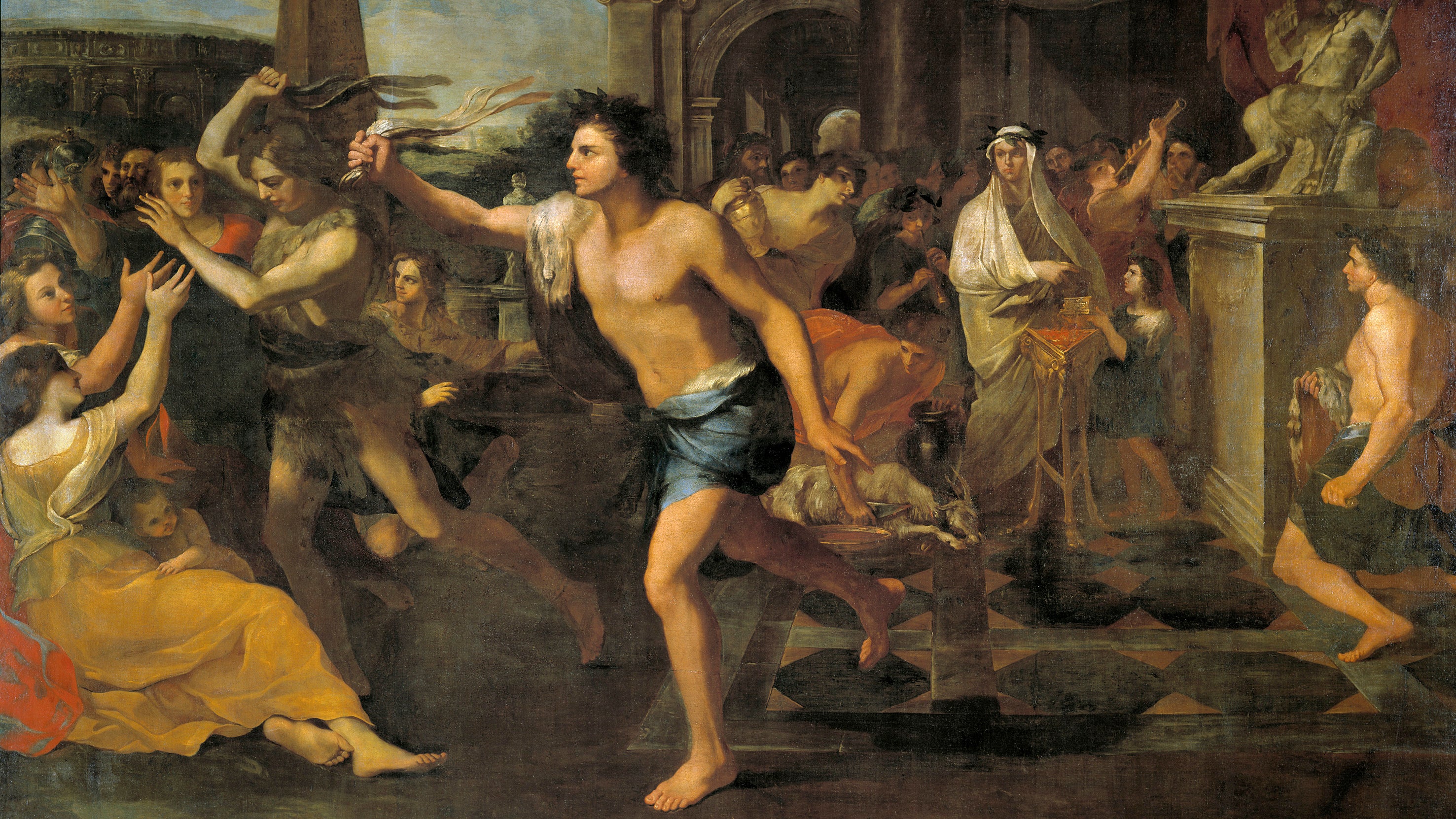
The Real, Bloody History Of Valentine's Day
by Patrick AllanWhen you think of Valentine's Day you probably think of flowers, chocolates, and notes sealed with a kiss - not whipping women with dead animals or martyrdom.
But it turns out this sweet and loving commercial holiday has its roots in pagan rituals and good old-fashioned Christian rebranding. Oh, and selling you cards.
Historians aren't 100 per cent sure about the origins of Valentine's Day, but many believe it all started as the pre-Roman empire ritual known as Lupercalia, which sounded like a real hoot. Every February 13-15, goats and dogs were sacrificed at an altar by the Luperci (or "brothers of the wolf") as an offering. After that, folks were anointed in the blood of the animals, wiped clean with some wool soaked in milk (as one does), and feasted until they were full and drunk. Then came the best part: The Luperci took the skins of the sacrificial animals and ran around naked, smacking people with them. Here's how Plutarch describes the festivities:
...many of the noble youths and of the magistrates run up and down through the city naked, for sport and laughter striking those they meet with shaggy thongs. And many women of rank also purposely get in their way, and like children at school present their hands to be struck, believing that the pregnant will thus be helped in delivery, and the barren to pregnancy.
Noel Lenski, a historian at the University of Colorado at Boulder, also points out that there was a kind of "matchmaking lottery" during the festival. Men drew women's names randomly from a jar and then they would be, uh, "coupled" during the duration of the festival. Now that is a holiday.
Then, ladies and gentleman - drum roll please - came the Catholic Church. They didn't care much for the blood, and the nakedness, and the sacrificing of the things. By the 5th century, Pope Gelasius I decided to create a new holiday right on top of the old pagan one to, well, make people forget about it. He said, and I quote, "Stop smackin' bitches with dead animals," and dubbed it St Valentine's day in honour of two Christian martyrs named Valentine - Valentine of Rome and Valentine of Terni - who both happened to be executed by the Roman Emperor Claudius Gothicus II on February 14 in two different years during the 3rd century AD. What are the odds? Actually, pretty good, since the Romans were basically executing everybody who was Christian during that time. Anyway, at that point, celebrating Lupercalia was all but outlawed.
But did that stop people from getting their fertility on this time of year? No way! The Normans (early northern French folks who descended from the Norse) celebrated Galatin's Day this time of year instead of St Valentine's Day. "Galatin" meant "a lover" or "a gallant", so they did that, and the name is even believed to have been confused with the name "Valentine" at some point. Eventually, during the Middle Ages, the day gradually became associated with romantic love in Europe. In the 14th century, Geoffrey Chaucer wrote in his Parlement of Foules:
"For this was on seynt Volantynys day, Whan euery bryd comyth there to chese his make"
For this was on St. Valentine's Day, when every bird cometh there to choose his mate.
The poem was for the first anniversary of King Richard II's engagement to Anne of Bohemia, and it's largely considered the first written instance where Valentine's Day is associated with romantic love and not fertility or lusty pursuits. Also, it was believed in England and France that the beginning of birds' mating season was February 14, hence the line in Chaucer's poem. They weren't far off. By the time the Julian calendar became the Gregorian calendar, February 14 actually became the 23, which is a time when some birds start mating and nesting in England. Either way, it added to the notion that Valentine's Day was for romance. By 1415, people were writing handmade valentines to one another, like the famous poem by Charles, the Duke of Orleans, "A Farewell to Love", that was sent to his wife while he was imprisoned in the Tower of London. And by Shakespeare's time - "To-morrow is Saint Valentine's day, all in the morning betime, and I a maid at your window, to be your Valentine" - the romantic version of Valentine's Day that we all know had become popular throughout almost all of Europe.
Around the start of the industrial revolution in the US, Valentine's Day went from being a small-time, historical day of romance to full-blown money tree. The new age of machinery ushered in mass-produced, factory-made cards one could easily purchase and pass off to those they cared for on special occasions. In 1913, Hallmark Cards offered pre-made valentines, and in 1916 started mass producing them. The day of romance was born anew as a commercial holiday. Since then, the day is not only about buying cheesy cards to pass around your Year 3 class, but it's also about buying flowers, chocolates, jewellery, and trying unsuccessfully to get reservations at halfway-decent restaurants. Love is still in the air, but there's no doubt the holiday is more about "stuff" nowadays than romance. It almost makes you miss the carcass-slapping days of old.
The Festival of Lupercalia, Óleo Sobre Lienzo.